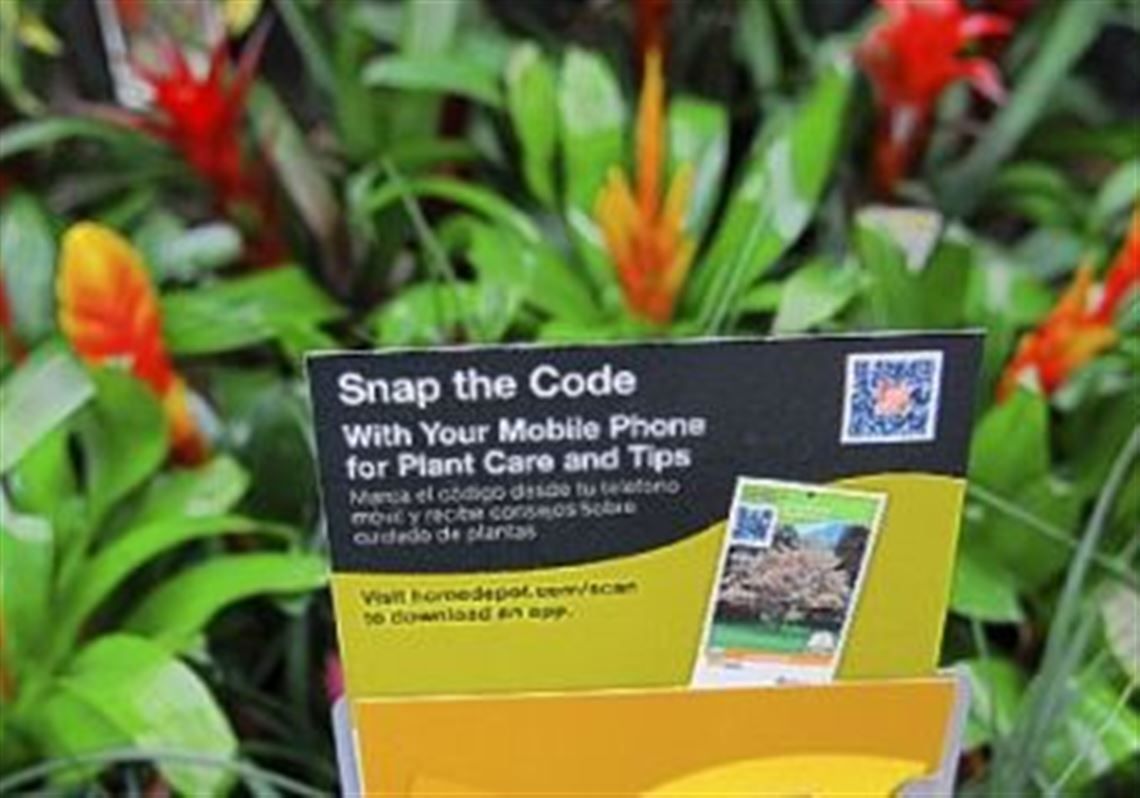The barcode burrowed its way into American retail slowly, eventually making it unnecessary for cashiers to type prices into their registers as well as empowering consumers to check themselves out.
Now an odd-looking square code known as the QR code could do even more for the retail industry -- bringing videos, customer reviews, even discounts to the shopping experience while keeping phone-wielding customers from straying off to Google or to the store next door.
The mottled boxes -- usually black and white -- are starting to show up on store signs, merchandise tags, print ads and even in a recent Jimmy Fallon-Stephen Colbert charity performance of the much maligned song "Friday."
Scan them with your app-enabled smartphone and they'll take you somewhere on the Web -- somewhere useful, one hopes.
U.S. retailers see the potential, but they know they're venturing into new territory for most people.
Even as they're experimenting with the codes, they're training customers how to use them.
"Scan me!" the shelf sign next to a dietary supplement at the GNC store says. "Snap the code with your mobile phone for plant care and tips," explains the small sign on the outdoor plant display at Home Depot. "For optimal experience, install a QR code reader," advises the display by Michael Kors fashions at Macy's.
Widely used in Japan and Korea, the QR code, short for quick response, was developed in 1994 by Toyota subsidiary Denso Corp. Two-dimensional codes pack more information into less space than a traditional bar code.
There are other versions of such codes, including the Microsoft Tag that shopping magazine Lucky used in its February issue to direct readers to videos on how to dye leather and how to shop at a drugstore for certain skin care products.
The rise of the QR code -- and its acceptance by customers -- is by no means a sure thing even if the use of cell phones in shopping is pretty much a done deal.
Shoppers have been using their phones for years, if only to call home for instructions. The almost 70 million Americans who had smartphones as of February, according to comScore Inc., can go online to check out customer reviews, compare prices and gather information.
"If you don't look at your customer as a person who has a phone in [his] hands and think about what that means, you're going to be in trouble," said Chris Mason, co-founder and management director of Branding Brand, a mobile commerce design and development company in Oakland.
Savvy retailers are developing apps and sending texts, and they are experimenting with QR codes.
Use a smartphone to snap a shot of the QR code tucked into a red Macy's star on the Rachel Roy display in the Ross Park Mall store's women's clothing department and pretty quickly the designer herself is telling you -- and anyone standing within earshot -- "Here's what I really want you to understand about mixing and matching. ...." Customers might want to consider using a headset when testing out the codes since more than a few link directly to videos.
The Best Buy store on Mc-Knight Road seemed coated in QR codes, with big ones designed into the wall displays and smaller ones on shelf signs. In the television area, one code pulled up video options, including, "Tech 101: 3-D Basics." But the reception on an HTC Verizon 4G-enabled phone was dicey that day.
"Buffering," the hand-held screen said, just like the big PC screen back at the office. When the video did play -- in bits and pieces -- the store's music, TVs and general sound level made it difficult to hear.
Employees at that store seemed either puzzled by or encouraged by the sight of a customer wandering around and staring at a small screen. After two women were shrugged off, one male employee made a more vigorous attempt. "If you have any questions, I'll be more than happy to answer them for you so you don't have to do the homework on your own."
With so much information at their fingertips, customers can easily turn a retail store into a showroom to let them see the things they'll go buy elsewhere or online.
"Marketing was all about getting the person to enter the store before," said Mr. Mason. "If you got them in there, you did your job.
"Now you have to keep them in there."
A Best Buy QR code for a Samsung 1,000-watt, 3-D home theater system (on clearance $609.99) took the smartphone user to more detail, including customer reviews that showed 16 of 23 reviewers would recommend it to a friend. There was "great unit for the price" as well as "horrible ... just horrible."
Mark Staub, a store interactive technology specialist at the Best Buy in North Fayette, said some customers were confident in their use of the codes and preferred doing their own thing. Others ask what the codes are. That allows staffers to pull out their iPod Touches and demonstrate -- and show off the mobile devices that the store sells.
Beyond Best Buy, the hunt for QR codes turned up generally sparser results.
At the GNC store at Ross Park, an employee was able to point to the far back corner where the MRI NO2 Red supplement ($69.99 for 150 caplets, $55.99 for members) had a familiar mottled code on its shelf sign. A quick scan brought up a text sales pitch on the excellence of the product as well as an offer for a $5 off coupon and for a free sample.
Cosmetics chain Sephora had a couple of the codes on display -- an employee pointed them out after noticing the baffled customer -- although one tucked inside a plastic cube presented some scanning problems.
"When they are in those plastic things, they are hard to scan," the staffer said.
Another tucked at the bottom of the Urban Decay display, next to the "makeup locking spray," brought up a selection of choices including "Sephora Hot Now," "Spring Trends" and "Makeup Plus." Clicking on some of the choices didn't seem to bring anything up, but the "hot now" section put Jennifer Aniston's perfume ($39 for one ounce) at the top of the screen.
Branding Brand, which has worked with GNC and Sephora, put huge QR codes on the screens at Cowboys Stadium in late 2009 for Dick's Sporting Goods when the Findlay retailer launched its mobile site. Those codes took users to the retailer's mobile website, but also offered people a special discount.
QR codes should offer some sort of payoff for taking the time to scan them, in Mr. Mason's opinion. At a minimum, the information should be relevant. "You better get something good. I'm talking about an exclusive discount."
He's not impressed by codes that take users to a company's website, especially one that's not even configured to work on a hand-held screen. Those kind of results just discourage shoppers from bothering to scan the next code.
Companies may also find that, like on Facebook or Twitter, fresh material must be created for code-scanning customers.
Macy's videos are now focused on spring merchandise, but that will change later in the year, said Andrea Schwartz, vice president of media relations and cause marketing for Macy's North and Midwest regions. "Shopping is an experience," she said. "It should be a fun and engaging experience."
Home Depot this spring put QR codes on the tags attached to its live plants. The $12.98 Dracaena houseplant prefers medium light and needs water one or two times a weeks, according to information that pops up when its code is scanned.
Outside, plastic information tags were stuck into containers of potted tulips. The QR codes were printed at the bottom and disappeared into the dirt in a few cases.
Elsewhere in the Home Depot store in Ross, such codes were more elusive, although a Ryobi tool display included one that brought up an video advertisement.
Eventually, the industry's goal is to get to one-click shopping through these kinds of codes, said Mr. Mason. Marketers like that they can see how many people scan a particular sign or even a billboard along the highway. If a code isn't being seen and used, they can tell.
At the moment, though, QR codes aren't accessible to many shoppers. And even those with smartphones may not be tuning in. Mr. Mason noted that while Android versions of cellphones come with a QR code reader installed, the iPhone does not. But there's an app for that.
First Published: April 10, 2011, 8:00 a.m.


